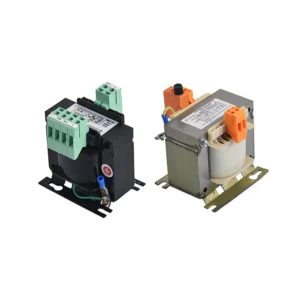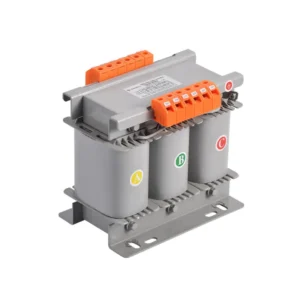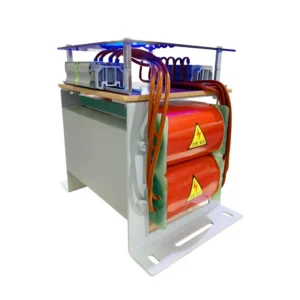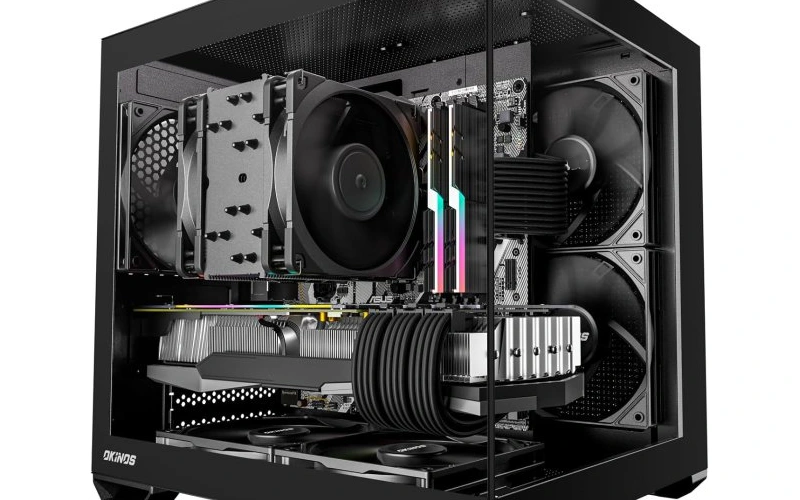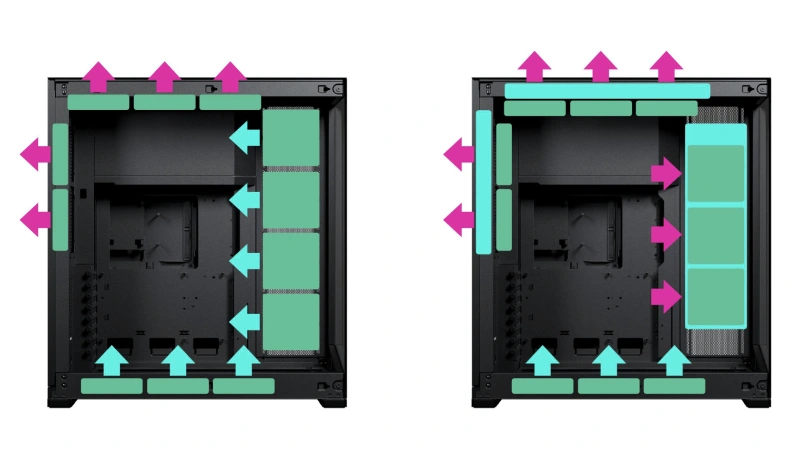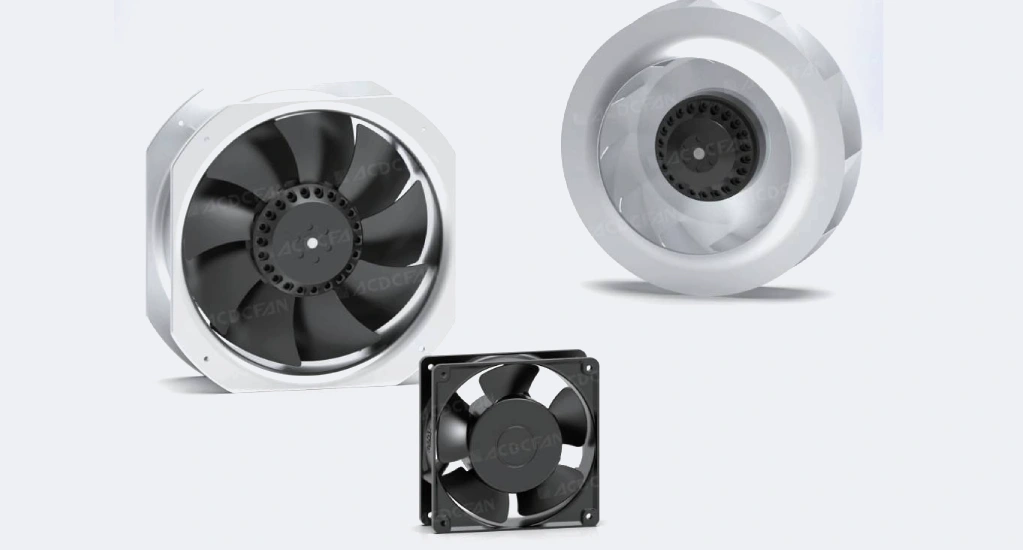So, what is a low voltage transformer? This type of transformer is used to convert higher voltage electricity into a safer, lower voltage that your devices and systems can safely handle. You’ll commonly find a low voltage transformer in homes, offices, and industrial settings, where it protects equipment and ensures efficient operation.
The demand for these transformers continues to grow rapidly. In 2024, the global market surpassed $38 billion, with projections reaching $53 billion by 2029, highlighting the critical role of a low voltage transformer in today’s electrical systems. Linkwell is recognized as a trusted provider, delivering reliable transformer solutions across various industries. When it comes to managing voltage safely and efficiently, choosing the right low voltage transformer is essential.
Low Voltage Transformer Key Takeaways
- A low voltage transformer changes high voltage electricity into a safer, lower voltage to protect your devices and improve efficiency.
- These transformers use electromagnetic induction to convert voltage without changing the electricity’s frequency, ensuring steady power for many applications.
- Different types of low voltage transformers serve various needs, such as control transformers for machines and dry-type transformers for safe indoor use.
- Low voltage transformers power many systems, including landscape lighting, industrial control cabinets, and commercial buildings, making them versatile and essential.
- Choosing the right transformer involves matching power needs, voltage, safety features, and environment, while proper installation and maintenance keep it working safely and efficiently.
What is a Low Voltage Transformer
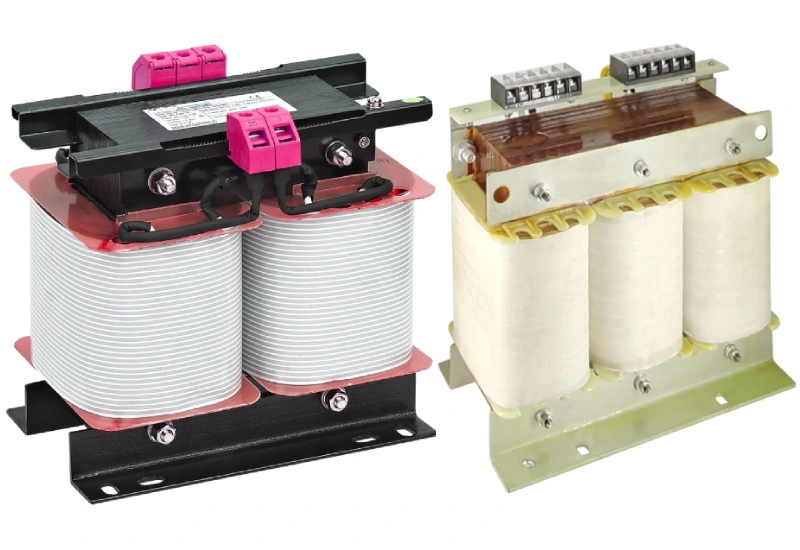
Definition
If you’ve ever wondered what is a low voltage transformer, you’re not alone. You see these devices everywhere, from your home’s doorbell to industrial control panels. A low voltage transformer takes electricity at a higher voltage and changes it to a lower, safer voltage that your equipment can use. This process protects your devices and keeps everything running smoothly.
You might ask, “Why do I need a transformer?” The answer is simple. Most electrical systems deliver power at a high voltage, which isn’t safe for many devices. A low voltage transformer steps that voltage down, making it suitable for things like LED lights, security systems, and control cabinets. You get reliable power without risking damage or safety hazards.
Linkwell stands out as a global leader in low voltage transformer solutions. The company’s products are trusted by industry giants like ABB, Siemens, and Schneider Electric. Linkwell’s transformers meet strict international standards, including UL and CE certifications. You can count on their quality, safety, and performance.
Main Function
Let’s break down what is a low voltage transformer really does for you. The main function centers on converting high voltage electricity into a lower voltage that matches your needs. This process uses electromagnetic induction, where the transformer’s primary coil receives the incoming voltage and creates a magnetic field. That field then induces a lower voltage in the secondary coil, which powers your devices.
Here’s what a low voltage transformer brings to your electrical system:
- It converts higher voltage electricity to a lower voltage, so your sensitive devices stay safe.
- It boosts energy efficiency by reducing power loss during transmission, which saves you money and supports sustainability.
- It improves safety by lowering voltage to safe levels, cutting the risk of electrical shock.
- It protects your equipment by providing a stable voltage supply, preventing spikes and extending device life.
- It offers versatility, letting you customize voltage for different applications and meet industry standards.
- It plays a key role in modern technology, like renewable energy systems and electric vehicles, by managing and converting voltage efficiently.
You’ll find a low voltage transformer in many places. It works in homes, offices, factories, and even outdoor lighting setups. The transformer’s core components include primary and secondary windings, a magnetic core that focuses the magnetic field, and insulation that keeps everything safe. Some transformers use magnetic cores for durability and steady voltage output, while others use electronic designs for compact size and high efficiency.
When you choose a low voltage transformer from Linkwell, you get more than just a device. You get a solution backed by decades of experience, ISO-certified manufacturing, and 24/7 support. Linkwell offers customization for different voltage levels, smart features, and fast delivery. Their transformers help you keep your systems safe, efficient, and ready for the future.
Low Voltage Transformer : How It Works
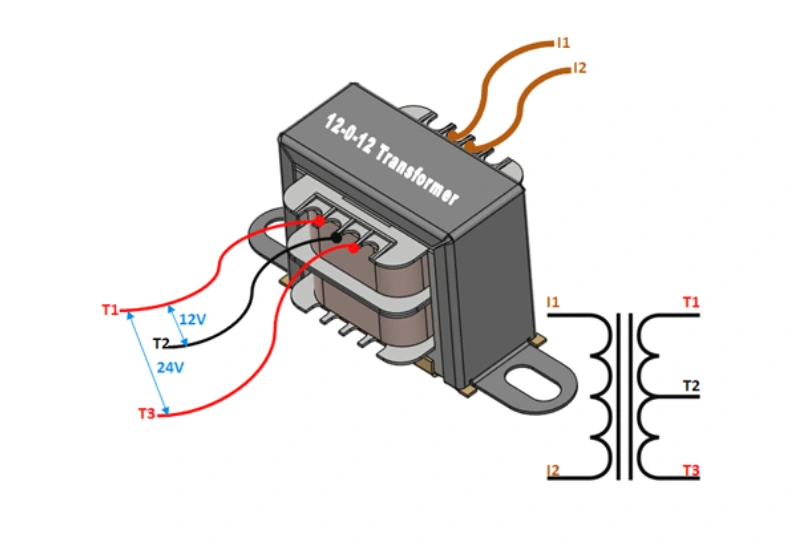
Electromagnetic Induction
You might wonder how a low voltage transformer actually changes voltage. The answer lies in a cool science trick called electromagnetic induction. When you plug in a transformer, the primary coil gets electricity from the power source. This electricity is not steady—it flows back and forth, creating a changing magnetic field around the coil.
Now, here’s where the magic happens. The secondary coil sits close to the primary coil, wrapped around the same core. The changing magnetic field from the primary coil passes through the secondary coil. This movement creates a new electric current in the secondary coil. The amount of voltage in this new current depends on how many times the wire is wrapped around each coil. If the secondary coil has fewer turns than the primary, the transformer steps down the voltage, making it safe for your devices.
Michael Faraday discovered this principle, and it’s called Faraday’s law of induction. You don’t need to remember the math, but you should know that this law lets a transformer change voltage without changing the frequency of the electricity. That’s why you can use a high voltage to low voltage transformer to power things like LED lights, control panels, and even your doorbell.
Tip: The step down transformer from Linkwell uses this principle to deliver safe, reliable voltage for your equipment. You get steady power and protect your devices from dangerous spikes.
Key Components
Let’s take a closer look at what’s inside a low voltage transformer. You’ll find several important parts working together to change voltage and keep everything running smoothly.
- Laminated Core: This is the heart of the transformer. It guides the magnetic field between the coils and helps reduce energy loss.
- Primary Winding: This coil connects to the input power supply. It’s where the electricity enters and starts the process.
- Secondary Winding: This coil delivers the transformed voltage to your devices. The number of turns in this coil decides how much the voltage drops.
- Main Tank (Casing): The casing protects all the internal parts from dust, moisture, and damage.
- Insulating Materials: These materials keep the coils and other parts from touching each other and causing faults.
- Cooling System: Some transformers use oil, cooling tubes, or fans to keep things from overheating. Linkwell’s step down transformer features heat-resistant copper windings and a compact design, so it fits easily into control cabinets and telecom racks.
- Dual Voltage Switch: This switch lets you pick between different output voltages, giving you flexibility for different devices.
- Control Box and Fans: These help manage voltage and current, and they keep the transformer cool and quiet.
- Pressure Relief Device: This safety feature releases extra pressure if something goes wrong inside the transformer.
Here’s a simple table to help you see how these parts work together:
| Component | What It Does |
|---|---|
| Laminated Core | Guides magnetic field, reduces loss |
| Primary Winding | Receives input voltage |
| Secondary Winding | Delivers output voltage |
| Insulation | Prevents electrical faults |
| Cooling System | Keeps transformer from overheating |
| Dual Voltage Switch | Allows voltage selection |
| Control Box/Fans | Manages voltage, reduces noise |
| Pressure Relief Device | Protects against internal faults |
When you choose a low voltage transformer from Linkwell, you get all these features packed into a safe, efficient device. The transformer’s construction ensures stable voltage, protects your equipment, and helps you save energy. You can use it in control cabinets, telecom racks, and many other places where you need reliable voltage conversion.
Low Voltage Transformer Types
Recommended products
When you look for a low voltage transformer, you’ll find several types, each with its own job. Let’s break down the most common ones you’ll see in homes, businesses, and factories.
Control Transformers
Control transformers focus on giving you steady, low-voltage power for control circuits. You’ll see them in machines that need reliable voltage for things like relays, solenoids, and contactors. These transformers keep your control systems safe by isolating the main power from the control side. They also filter out electrical noise, so your equipment runs smoothly.
- They provide stable voltage for control circuits.
- They protect against power surges and spikes.
- They handle inrush currents, which are common in control applications.
- Their strong build makes them perfect for tough industrial settings.
If you want your control panels to work without hiccups, a control transformer is the way to go.
Step Down Transformers by Linkwell
Step down transformers take high voltage and lower it to a level your devices can use safely. Linkwell’s step down transformer stands out because it’s built for reliability and safety. You can use it in control cabinets, telecom racks, and many industrial setups. The compact design fits tight spaces, and the heat-resistant copper windings mean you get long-lasting performance.
Linkwell’s step down transformer is customizable for different voltage needs. You get a solution that matches your exact requirements, whether you need 220V to 110V or something unique.
These transformers help you protect sensitive equipment, cut down on power loss, and improve energy efficiency. If you want a low voltage transformer that delivers stable voltage and keeps your systems running, Linkwell has you covered.
Dry-Type Transformers
Dry-type transformers use air for cooling instead of oil. This makes them safer for indoor use because there’s no risk of fire or oil leaks. You’ll often find these transformers in commercial buildings and factories where safety matters most.
Here’s a quick comparison to help you see the differences:
| Aspect | Dry-Type Transformers | Oil-Filled Transformers |
|---|---|---|
| Cooling Medium | Air | Oil |
| Safety | No fire hazard | Fire risk from oil |
| Maintenance | Low | High |
| Efficiency | Lower | Higher |
| Installation | Indoors, easy | Needs special protection |
Dry-type transformers may cost more at first, but you save on maintenance. They’re perfect when you need a low voltage transformer for indoor spaces and want to avoid extra safety steps.
Tip: Always match the transformer type to your voltage needs and the environment where you’ll install it.
Applications
Landscape Lighting
If you want to make your yard stand out at night, landscape lighting is the way to go. You can use a low voltage transformer to power your landscape lighting safely and efficiently. This setup lets you highlight trees, walkways, and garden features. A low voltage transformer for garden lights steps down the voltage from your home’s main supply to a safer level, usually between 8 and 12 volts. This makes landscape lighting much safer for outdoor spaces.
Landscape lighting systems use a low voltage transformer for led lights, which means you can install lights without deep trenches or heavy conduit. You get more flexibility in your design. You can add up lighting, down lighting, or even path lights. The transformer gives you a single control point, so you can turn all your landscape lighting on or off together. Many systems let you use timers or smart controls for even more convenience.
Here’s why you’ll love using a low voltage transformer for landscape lighting:
- You get safer outdoor lighting with less risk of shock.
- Installation is easier and cheaper because you don’t need deep trenches.
- You can control all your landscape lighting from one spot.
- The system supports energy-efficient bulbs, like LEDs, which save you money.
- You help the environment by using mercury-free bulbs.
| Aspect | Explanation |
|---|---|
| Voltage Conversion | Steps down 120V AC to 8-12V for landscape lighting fixtures. |
| Centralized Control | Lets you manage all your landscape lighting at once. |
| Safety | Low voltage output makes landscape lighting safer outdoors. |
| Installation Benefits | No need for deep burial or conduit for landscape lighting cables. |
| Flexibility | Supports creative landscape lighting designs, like up lighting and down lighting. |
| Energy Efficiency | Works with LED bulbs for efficient landscape lighting. |
Landscape lighting with a low voltage transformer gives you a beautiful, safe, and flexible way to light up your yard.
Industrial Cabinets
In factories and industrial settings, you need reliable power for control systems and automation. A low voltage transformer plays a big role here. You’ll find these transformers inside control cabinets, where they step down the voltage to run sensors, relays, and motors. Linkwell’s transformers are a top choice for these jobs. They fit easily into control cabinets and telecom racks, giving you steady voltage and protecting your equipment.
When you use a low voltage transformer in industrial cabinets, you get:
- Stable voltage for sensitive control circuits.
- Protection from power surges and spikes.
- Easy integration into tight spaces, thanks to compact design.
- Custom options for different voltage needs.
In a busy factory, a network of low voltage transformers can power robotic arms, quality sensors, and energy management systems. This setup keeps your production line running smoothly and safely.
Commercial Uses
You see low voltage transformers everywhere in commercial buildings. They power office equipment, lighting, and HVAC systems. Dry-type transformers work well in places like shopping centers, hospitals, and schools because they use air for cooling and don’t need oil. Their compact size fits tight spaces in urban buildings.
Here’s how low voltage transformers help in commercial settings:
- They deliver the right voltage for computers, lights, and telecom gear.
- Built-in safety features like overload protectors and fuses keep things safe.
- They help you save energy and lower utility bills.
- You get reliable power for everything from small shops to large offices.
| Industry Sector | Common Applications | Typical Transformer Types |
|---|---|---|
| Residential | Lighting systems, home appliances | Small, encapsulated transformers |
| Commercial | Office equipment, lighting, HVAC systems | Dry-type transformers |
| Industrial | Control systems, motors, automation equipment | Control transformers |
| Healthcare | Medical devices, imaging equipment | Isolation transformers |
| Transportation | Elevators, escalators, EV charging stations | Step-down, high efficiency types |
| Renewable Energy | Solar inverters, wind turbine controls | Specialized transformers |
| IT Infrastructure | Data centers, telecommunications | Isolation and control transformers |
Low voltage transformers keep your business running smoothly, whether you’re lighting up a store or powering a telecom rack. When you choose Linkwell, you get quality, safety, and efficiency for every application.
Selection and Safety
Choosing the Right Transformer
Picking the right transformer for your project can feel tricky, but you can make it simple by following a few steps. Here’s a quick guide to help you choose the best low voltage transformer for your needs:
- Power Needs: Add up the wattage and amperage for all your devices. Always pick a transformer with at least 20% extra capacity for safety and future upgrades.
- Voltage Match: Check that the input voltage matches your power source and the output voltage fits your devices. Stable voltage keeps everything running smoothly.
- Safety Features: Look for built-in circuit breakers, overload protection, and certifications like UL or CE. These features protect your equipment and your peace of mind.
- Environment: If you plan to use the transformer outdoors or in tough spots, pick one with the right temperature range and dust or water resistance.
- Efficiency: Choose energy-saving models to cut down on power loss and lower your bills.
- Type and Brand: Match the transformer type to your application. Trust brands like Linkwell, known for quality and strong support.
- Easy Setup and Care: Make sure the transformer is easy to install and maintain. Clear instructions and good design make a big difference.
Tip: Linkwell transformers go through strict testing and meet top international standards, so you know you’re getting a safe and reliable product.
Installation Tips
You want your transformer to work safely and last a long time. Here are some tips to help you install it right:
- Place the transformer in a spot with good airflow to prevent overheating.
- Make sure it’s easy to reach for future checks or repairs.
- Use fire-resistant enclosures and follow all local electrical codes.
- Keep the transformer away from water, dust, and anything that could cause damage.
- Ground the transformer properly to protect against static charges.
- Double-check all wiring connections and use the right size wires to avoid voltage drops.
- Start with a gradual load and monitor voltage and current as you power up.
Note: Linkwell’s transformers come with clear instructions and safety features, making installation smooth and secure.
Maintenance and Troubleshooting
Regular care keeps your transformer running strong. Here’s what you should do:
- Inspect the transformer often for loose wires, damaged parts, or signs of overheating.
- Clean dust and dirt from the outside to keep airflow clear.
- Check all electrical connections and tighten them if needed.
- Watch for flickering lights or dimming, which can mean voltage drops or loose connections.
- Use a multimeter to check output voltage if you notice problems.
- Replace any damaged wiring or parts right away.
- If you see moisture or corrosion, fix it fast to avoid bigger issues.
Linkwell follows strict quality standards, including ISO 9001 and CE certifications. Their transformers are tested for insulation, voltage stability, and safety before they reach you.
If you ever run into trouble, start by checking connections, measuring voltage, and looking for signs of wear. Most issues can be fixed with a little care and attention.
You’ve seen how a transformer keeps your devices safe by stepping down voltage and boosting efficiency. In today’s world, low voltage transformers support smart grids, renewable energy, and reliable power for homes and businesses. Linkwell leads with innovations like surge-protected transformers and customizable voltage solutions. You’ll notice smart and wireless transformer technology growing fast, especially in urban areas.
FAQ
What is the main job of a low voltage transformer?
You use a low voltage transformer to change high voltage electricity into a safer, lower voltage. This keeps your devices safe and helps them work better. You get steady power and avoid damage from voltage spikes.
Can I use a low voltage transformer outdoors?
Yes, you can use certain low voltage transformers outdoors. Just make sure you pick one with weatherproof features. Always check the product label or ask your supplier for outdoor-rated models.
How do I know what size transformer I need?
Add up the wattage of all devices you want to power. Choose a transformer with at least 20% more capacity than your total. This gives you a safety margin and room for future upgrades.
What should I do if my transformer feels hot?
A little warmth is normal. If it feels very hot or smells burnt, turn it off right away. Check for dust, blocked airflow, or loose wires. If you’re unsure, call a professional for help.
Conclusion
A Low Voltage Transformer is essential for safe, efficient, and reliable power conversion across residential, commercial, and industrial applications. It protects devices, ensures voltage stability, and supports modern technologies like renewable energy and smart grids.
Choosing the right transformer—such as Linkwell’s certified solutions—guarantees long-lasting performance, safety, and cost efficiency. For custom solutions, inquiries, or bulk orders, Linkwell delivers trusted expertise tailored to your power needs.


